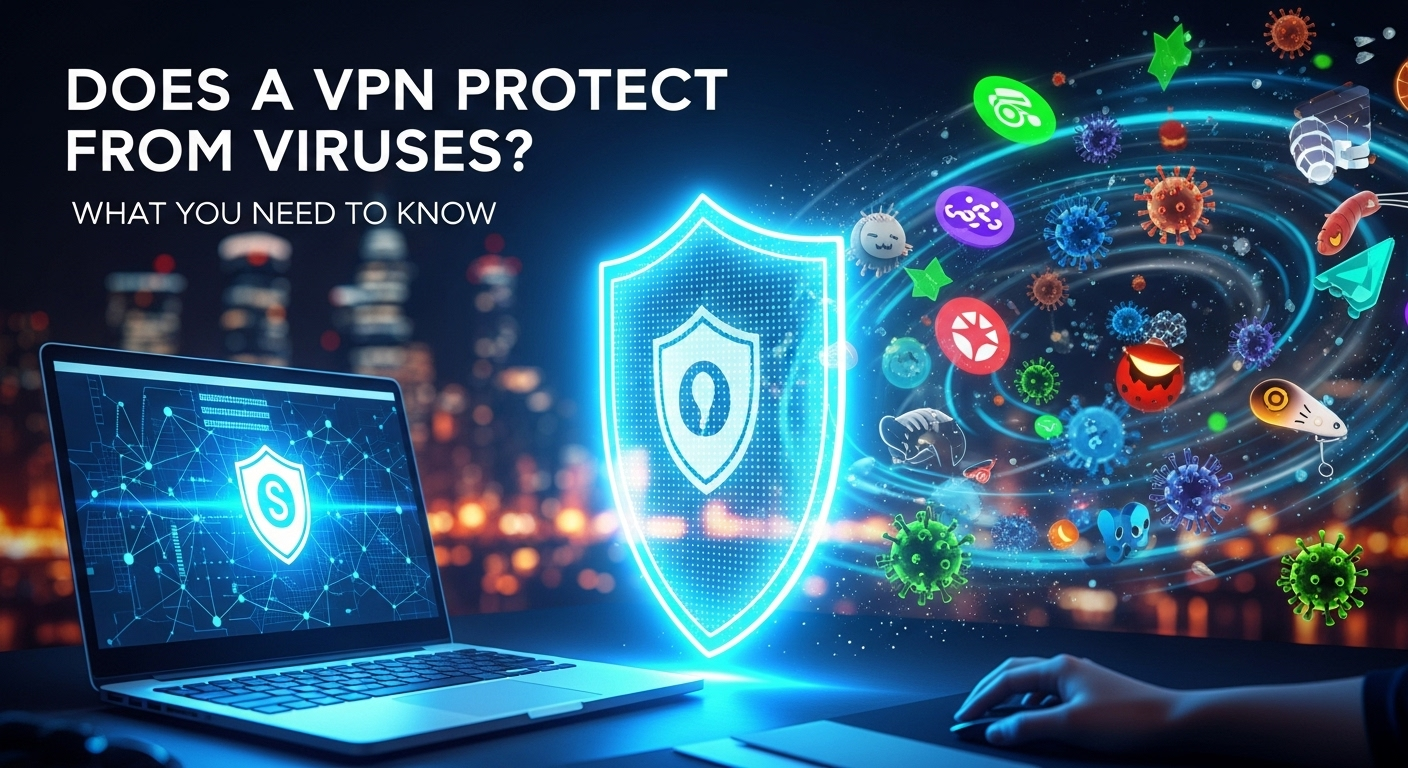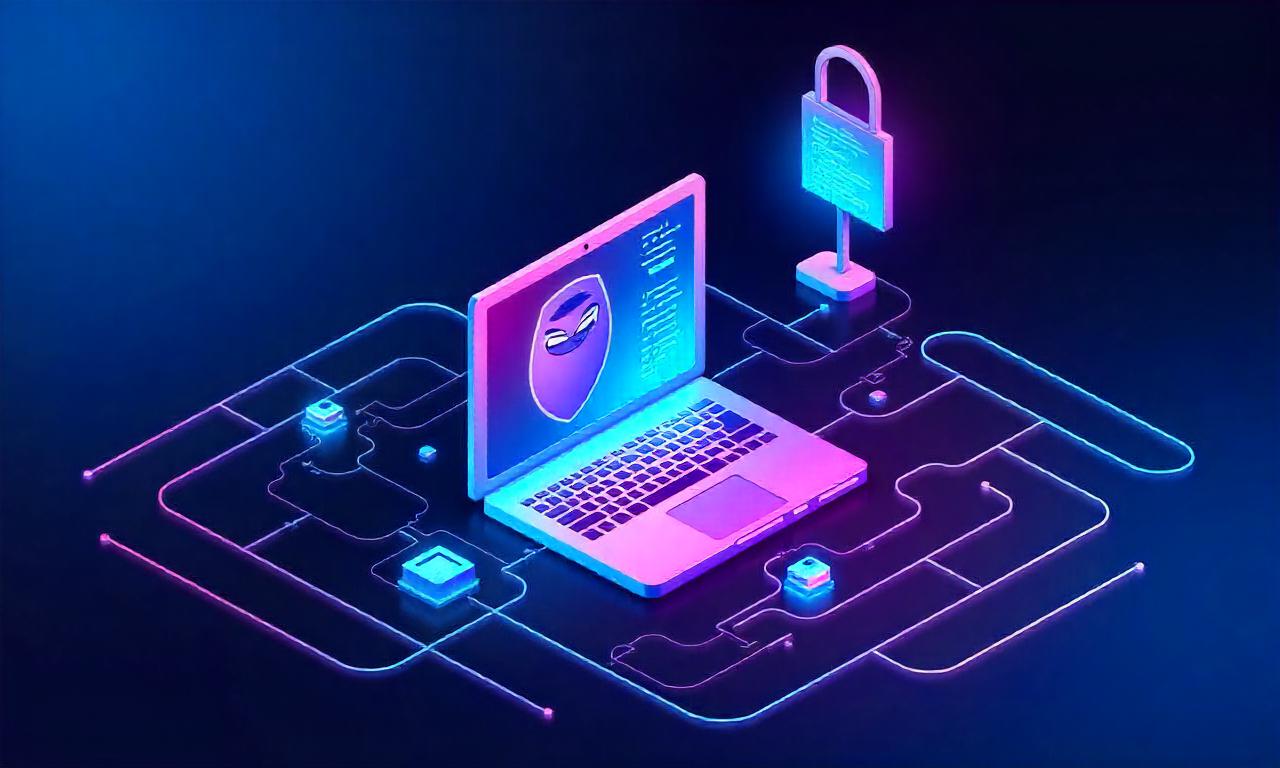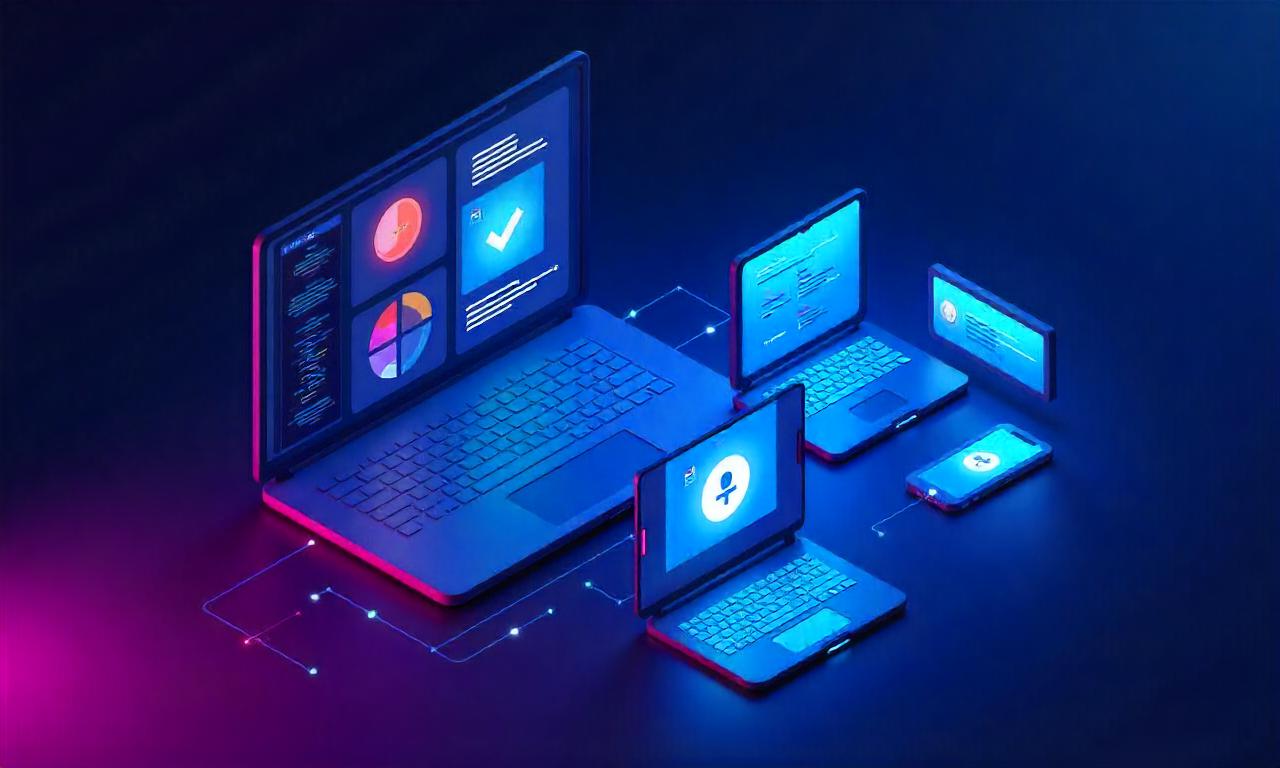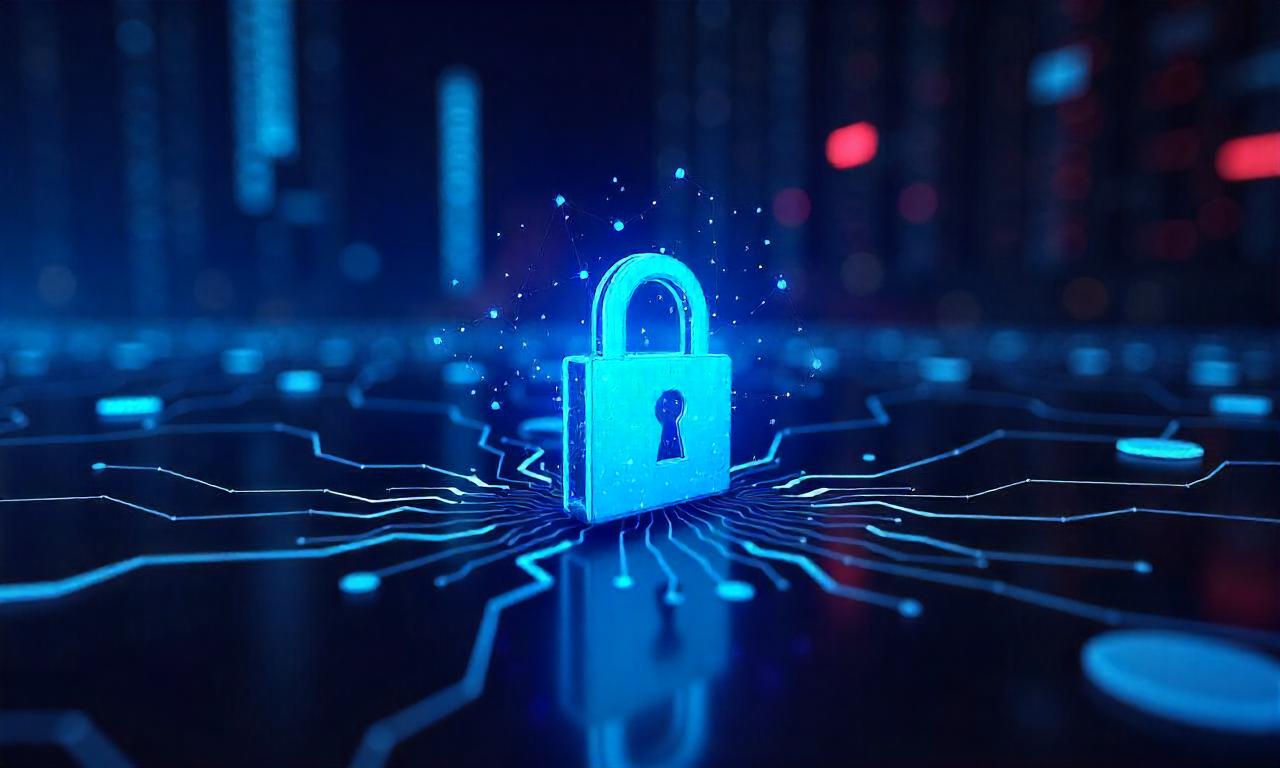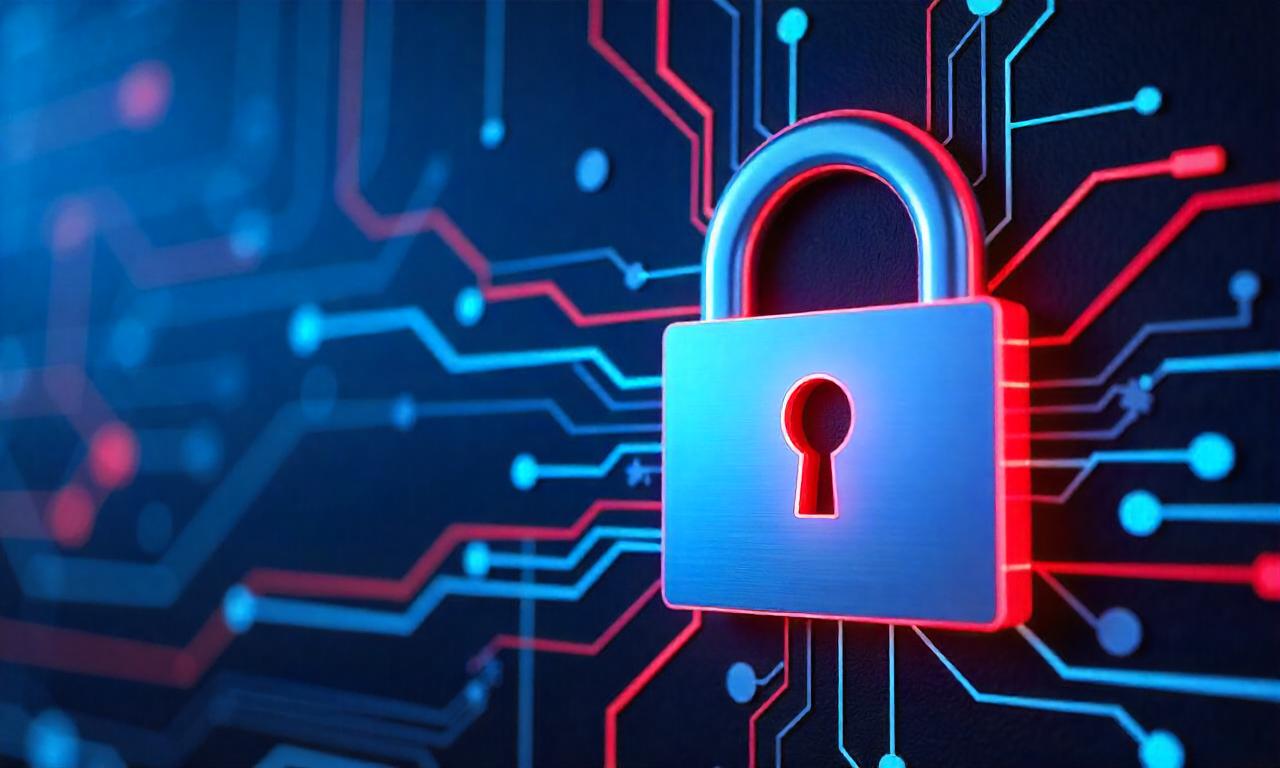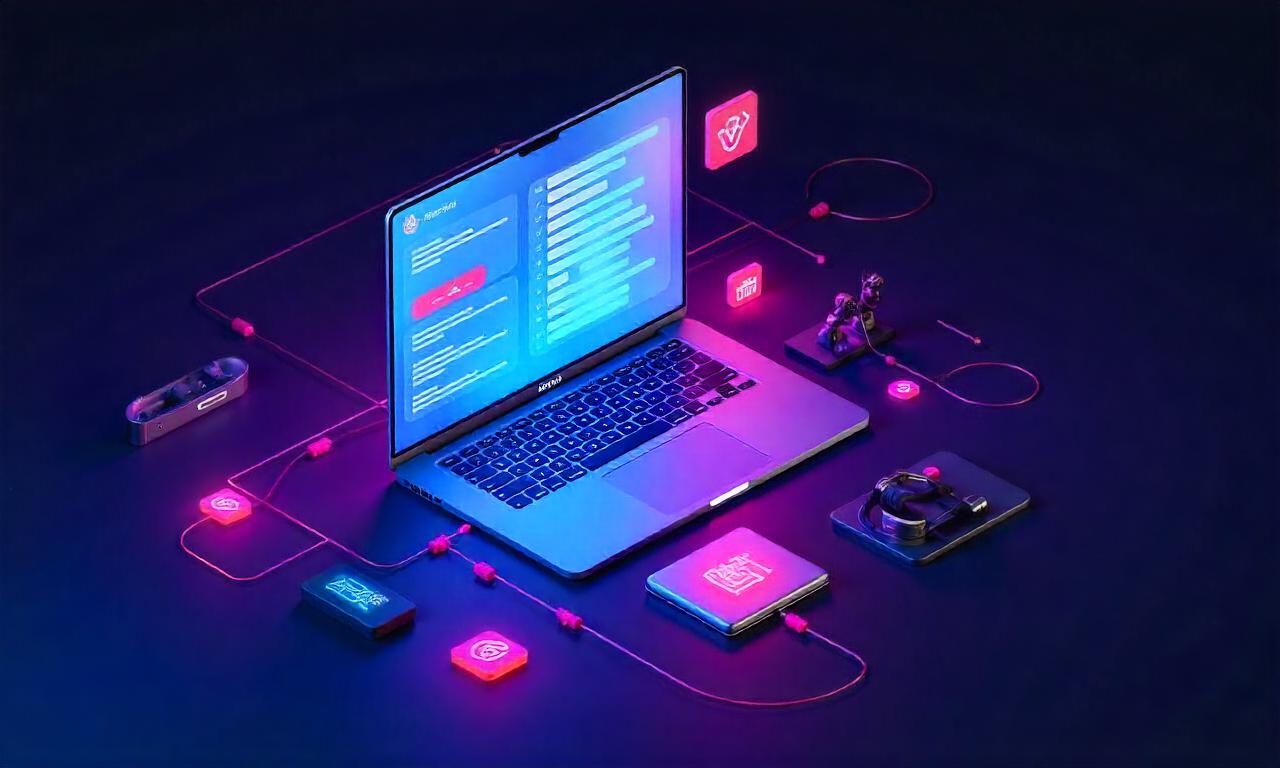Does a VPN Protect From Viruses? What You Need to Know
If you’ve ever asked yourself, “does a vpn protect from viruses,” you’re not alone. It’s a common—and important—question in a world where we spend much of our lives online. The short answer: a VPN is not antivirus software, but it can reduce certain risks that lead to infections. To stay truly safe, you need to understand what a VPN actually does, where it helps, and where it doesn’t—and how to build a layered defense that includes more than one tool.
Table of Contents
ToggleWhat a VPN Really Does (and What It Doesn’t)
At its core, a Virtual Private Network (VPN) encrypts your internet traffic and routes it through a secure server. This makes your data unreadable to snoops on the same network and hides your IP address from websites, advertisers, and many types of trackers. On untrusted Wi‑Fi, that encryption is a powerful shield against passive eavesdropping and some forms of active tampering.
However, a VPN is not a malware scanner. It doesn’t inspect the files you download, analyze email attachments, or quarantine suspicious apps. If you click a malicious link and download ransomware, the VPN won’t stop that executable from running on your device. Think of a VPN as a privacy and network security tool—not an endpoint antivirus or EDR (endpoint detection and response) solution.
That said, VPNs can indirectly prevent infections by blocking some paths attackers use. For example, some VPNs offer DNS filtering that stops connections to known malicious domains. Others include tracker blocking or “Threat Protection” add-ons. These features help reduce risk, but they’re not a substitute for real-time malware protection on your device.
- What a VPN does well:
- Encrypts internet traffic on risky networks
- Masks your IP address and location
- Helps prevent ISP/ad-injection and some MITM attacks
- What a VPN does not do:
- Scan files for viruses
- Remove malware already on your device
- Replace antivirus, EDR, or patching
How Viruses and Malware Actually Infect Devices
Understanding the modus operandi of malware helps clarify where a VPN fits. Most infections happen through human interaction—phishing emails, fake software updates, or malicious downloads—rather than magical “over-the-air” compromise.
Phishing remains the top entry point. Attackers craft convincing emails or messages that lure you into clicking links or opening attachments. Once you enable macros or run an installer, the malware executes. The presence of a VPN doesn’t change that basic sequence of events.
Exploits are another vector. Unpatched browsers, VPN clients, browser extensions, or document readers can be targeted through drive-by downloads on compromised sites. Here, a VPN won’t stop the exploit itself, but a VPN with DNS or URL filtering might block the known-bad domain before the page loads.
Common infection vectors include:
- Phishing attachments and links
- Malicious advertisements (malvertising)
- Trojans disguised as free software or “cracks”
- Exploits against outdated software
- Infected USB devices or local network shares
When a VPN Can Help — Indirect Protections That Matter
Even though a VPN doesn’t disinfect your device, it can reduce exposure to risk. On public Wi‑Fi—airports, cafés, hotels—unencrypted traffic is low-hanging fruit for attackers. A VPN encrypts your session end-to-end, thwarting many snooping attempts and some forms of content injection that could otherwise deliver malware.
Some VPN services add DNS filtering to block malicious or typosquatted domains, cutting off access to known phishing kits and command-and-control servers. While this won’t catch everything, it can stop you from landing on a dangerous page in the first place—a meaningful risk reduction in the kill chain.
Additionally, masking your IP with a VPN can deter opportunistic scanning and certain IP-based attacks. Attackers who rely on IP reputation or geofenced campaigns may find you a harder target. It’s not invisibility, but it’s another layer that increases their cost and decreases your exposure.
1. Public Wi‑Fi: A Realistic Use Case Where VPNs Shine
On open networks, attackers can sniff traffic, perform SSL stripping in poorly configured scenarios, or inject malicious scripts if a site lacks proper HTTPS. A reputable VPN ensures your traffic stays encrypted from your device to the VPN server, preventing in situ interception or tampering.
Even in environments with captive portals or shared passwords, your VPN tunnel isolates you from other users. This reduces risk from rogue APs and evil-twin hotspots attempting to capture credentials or inject malware through content manipulation.
2. Stopping Some Bad Domains Before You Reach Them
If your VPN includes DNS filtering or “safe browsing” features, it can block your device from resolving known-malicious domains. This is particularly effective against phishing links and malware distribution networks that rely on fast-changing infrastructure.
While DNS filtering isn’t perfect—it can be bypassed by direct IP connections or brand-new domains—it adds friction for attackers and reduces your exposure to common threats. It also helps prevent callbacks to command-and-control servers, potentially neutering certain malware even if it executes.
What a VPN Won’t Do Against Viruses (and What Will)
It’s critical to be precise: a VPN doesn’t scan files, detect ransomware, or clean infections. If you download a malicious PDF and your reader is vulnerable, the VPN won’t rescue you. If you run a trojanized installer, your VPN has no power to stop the binary from encrypting your files.
What will help? Real-time endpoint protection, frequent patching, and safe browsing habits. Next-gen antivirus/EDR tools monitor process behavior and can block known and unknown threats. OS and app updates seal off known vulnerabilities. Browser hardening and email security reduce the chance of encountering malware in the first place.
To visualize where each tool fits, consider this quick comparison:
| Layer/Capability | VPN | Antivirus/EDR | Firewall | DNS Filter | Auto-Update/Patching |
|---|---|---|---|---|---|
| Encrypts traffic on public Wi‑Fi | Yes | No | No | No | No |
| Hides IP address | Yes | No | No | No | No |
| Blocks malware downloads | Partial (if feature exists) | Yes | No | Partial | No |
| Detects/removes viruses | No | Yes | No | No | No |
| Blocks malicious domains | Partial (if feature exists) | Partial (web shield) | No | Yes | No |
| Stops exploits | No | Partial (behavior shields) | No | No | Partial (by patching) |
| Prevents lateral network attacks | Partial (isolation) | Partial | Yes (segmentation) | No | No |
| Reduces phishing risk | Partial (domain block) | Partial (link scanning) | No | Yes | No |
Bottom line: Use a VPN with security extras for added protection—but rely on antivirus/EDR, patching, and backups for true virus and ransomware defense.
Building a Layered Defense: Practical Steps
A strong security posture is multilayered. Each layer covers a gap the others leave open. This approach is de facto best practice whether you’re an individual, a freelancer, or running a small business.
Start by reducing your attack surface. Keep your operating system, browsers, plugins, and critical apps up to date. Disable unnecessary extensions and services. The fewer doors you leave open, the fewer opportunities attackers have to sneak in.
Then add detection and response with reputable, up-to-date antivirus or EDR software. Combine that with hardened browsing, cautious email habits, and an offsite backup strategy. A good VPN fits neatly into this stack—especially for travel and public Wi‑Fi—without pretending to be a cure-all.
1. Patch and Update Relentlessly
Updates are security fixes. Many drive-by infections exploit known vulnerabilities months or years after patches are released. Enable auto-updates where possible and set a monthly calendar reminder to check for firmware updates on routers and IoT gear.
Don’t forget the browser: update it and prune extensions. One malicious or abandoned extension can undo your best efforts, regardless of VPN use.
2. Use Reputable Antivirus or EDR
Modern security suites analyze behavior, not just signatures. They can spot ransomware-like actions (mass file encryption), block malicious scripts, and quarantine suspicious processes. This fills the critical gap a VPN doesn’t cover.
Keep protection enabled at all times and schedule regular scans. If you handle sensitive work, consider EDR-level tools that provide rollback features and detailed alerts.

3. Harden Your Browser and Email Habits
Most malware begins with a click. Use a privacy-focused browser profile for casual browsing and a separate, locked-down profile for work or finance. Enable built-in safe browsing features and consider script control on high-risk sites.
Treat unexpected attachments and links with skepticism. Hover to preview URLs, verify senders out-of-band, and avoid enabling macros in documents unless absolutely necessary.
4. Back Up Like Your Data Depends on It (Because It Does)
Adopt the 3-2-1 rule: three copies of your data, on two different media, with one offsite. Test restores periodically. If ransomware strikes, clean backups are your lifeline.
Use versioned backups to roll back unwanted changes. Cloud storage with file versioning can help—but ensure it’s not constantly mapped in a way that ransomware can encrypt it.
5. Strengthen Authentication
Use a password manager to generate unique, long passwords and enable MFA everywhere it’s offered. If malware steals one password, MFA helps prevent account takeover.
Prefer app-based or hardware key MFA over SMS when available. This reduces the risk from SIM swapping and phishing kits that can intercept codes.
How to Choose a VPN With Security in Mind
Not all VPNs are equal. Some are built for speed and streaming, others emphasize privacy and enterprise-grade security. If you’re using a VPN to reduce risk, prioritize providers that combine audited privacy practices with robust security features.
Look for a kill switch, DNS/IPv6 leak protection, and modern protocols like WireGuard or IKEv2/IPsec. Bonus points for integrated malicious domain blocking, tracker blocking, and robust server hardening. Independent audits and transparent ownership are meaningful signals of trust.
Finally, consider usability. A security tool you can’t or won’t use consistently won’t help. Cross-platform apps, intuitive controls, auto-connect on untrusted networks, and split tunneling for sensitive apps can make safer behavior the default.
1. Performance and Protocols
Protocol choice matters. WireGuard is fast and efficient, making it more likely you’ll leave your VPN on without noticing slowdowns. Strong encryption defaults and perfect forward secrecy are must-haves.
A provider with a wide server footprint helps reduce latency and avoid overcrowded servers. Consistent performance encourages good habits—namely, keeping the VPN connected.
2. Privacy Posture and Audits
Marketing claims are cheap. Prefer VPNs with independent audits of no-logs policies, open-source apps, or at least reproducible build processes. Clear jurisdictions and transparent leadership inspire confidence.
Review the privacy policy for data collection and retention. Minimal diagnostics with opt-out controls is a good balance between troubleshooting and privacy.
3. Security Extras That Actually Help
DNS filtering, tracker blocking, and threat lists can prevent some malicious connections. A reliable kill switch ensures your traffic doesn’t leak if the VPN drops. Multi-hop and obfuscation can help in restrictive networks, though they’re not required for most users.
These extras are “nice-to-have” layers—not replacements for endpoint protection. Use them to complement, not to substitute.
Common Myths About VPNs and Viruses
Myth 1: “A VPN is the same as antivirus.”
Reality: A VPN encrypts traffic and hides your IP. Antivirus/EDR detects and removes malware. They solve different problems.
Myth 2: “If I have a VPN, I can click anything safely.”
Reality: Clicking malicious links can still install malware. A VPN won’t stop you from running dangerous code.
Myth 3: “VPNs prevent ransomware.”
Reality: Ransomware usually arrives via phishing or exploits. A VPN can’t stop local file encryption once malware runs.
Myth 4: “HTTPS makes VPNs unnecessary.”
Reality: HTTPS protects site-to-user connections but doesn’t hide your IP or prevent all forms of interception on hostile networks. A VPN adds encryption at the network layer and privacy benefits beyond HTTPS.
Myth 5: “Free VPNs are just as safe.”
Reality: Many free VPNs monetize through ads or data collection, may lack audits, and often skimp on security features. When privacy is the product, consider who’s paying.
FAQs: Quick Answers
Q: Does a VPN protect from viruses?
A: Not directly. A VPN encrypts your traffic and hides your IP, but it doesn’t scan or remove malware. For virus protection, use reputable antivirus/EDR, keep software updated, and practice safe browsing.
Q: Can a VPN stop phishing?
A: A VPN can block some malicious domains if it includes DNS filtering, but it won’t stop you from entering credentials on a fake site. Awareness and email security are crucial.
Q: Will a VPN protect me on public Wi‑Fi?
A: Yes, it significantly reduces risk by encrypting traffic and preventing eavesdropping. It won’t prevent you from downloading malware if you click a malicious link.
Q: Do I still need antivirus with a VPN?
A: Absolutely. Antivirus/EDR and a VPN address different layers of security. Together with patching and backups, they form a stronger defense.
Q: Can malware bypass a VPN?
A: If malware executes on your device, it can operate regardless of the VPN. Some malware even tries to disable security tools. That’s why prevention, detection, and backups are vital.
Q: Is DNS filtering in VPNs enough to stop malware?
A: It helps but isn’t sufficient. DNS filtering blocks known bad domains but won’t catch every threat or stop a malicious file you’ve already downloaded from running.
Conclusion
A VPN is a powerful tool for privacy and safer networking, especially on public Wi‑Fi, but it is not an antivirus. It can reduce exposure—blocking some malicious domains, preventing network snooping, and masking your IP—but it won’t scan files or remove infections. Real protection against viruses and ransomware comes from a layered approach: patched software, reputable antivirus/EDR, smart browsing, strong authentication, and resilient backups, with a VPN as a complementary shield.
Used together, these layers turn you from an easy target into a hardened one. That’s the practical answer to “Does a VPN protect from viruses?”—not by itself, but as part of a thoughtful, layered defense, it can make a meaningful difference.
Summary (TL;DR):
- A VPN encrypts your traffic and hides your IP; it does not scan or remove malware.
- It can indirectly help by blocking malicious domains, stopping Wi‑Fi snooping, and reducing some IP-based risks.
- For true virus protection, use antivirus/EDR, patch aggressively, harden your browser/email habits, enable MFA, and maintain tested backups.
- Choose a VPN with audited privacy, strong protocols, a kill switch, and optional DNS filtering to complement your security stack.

